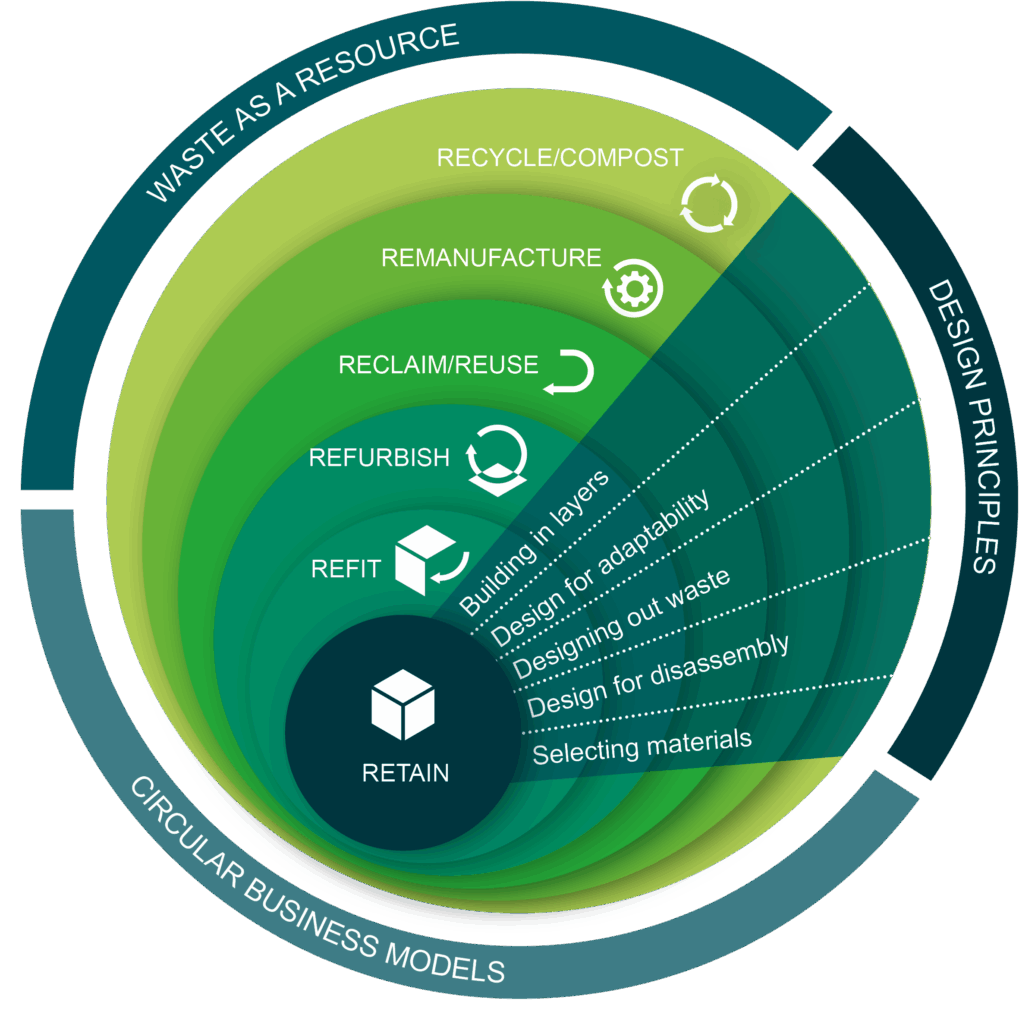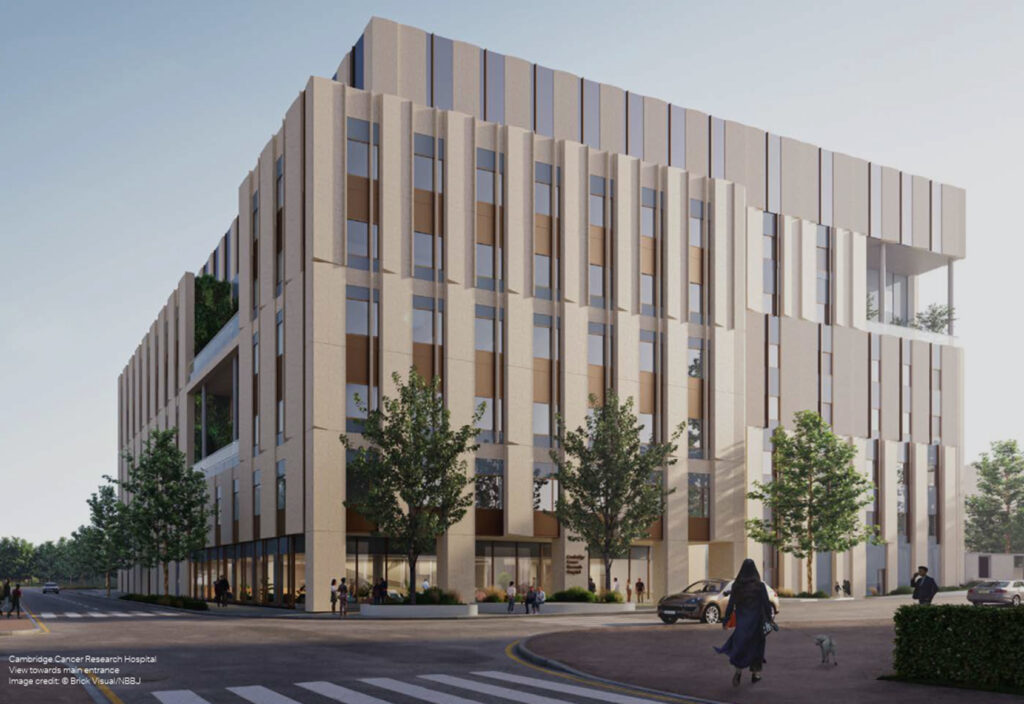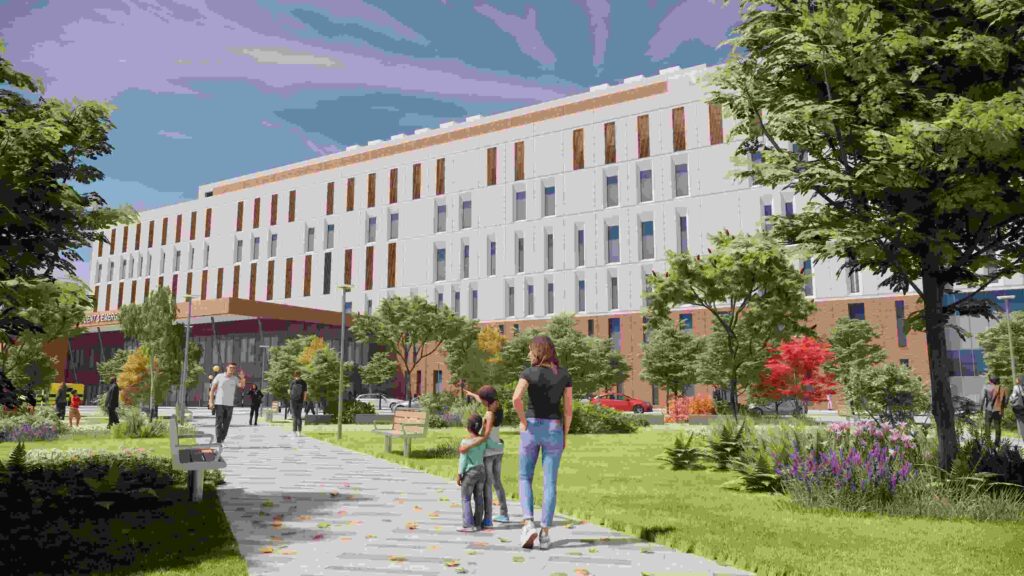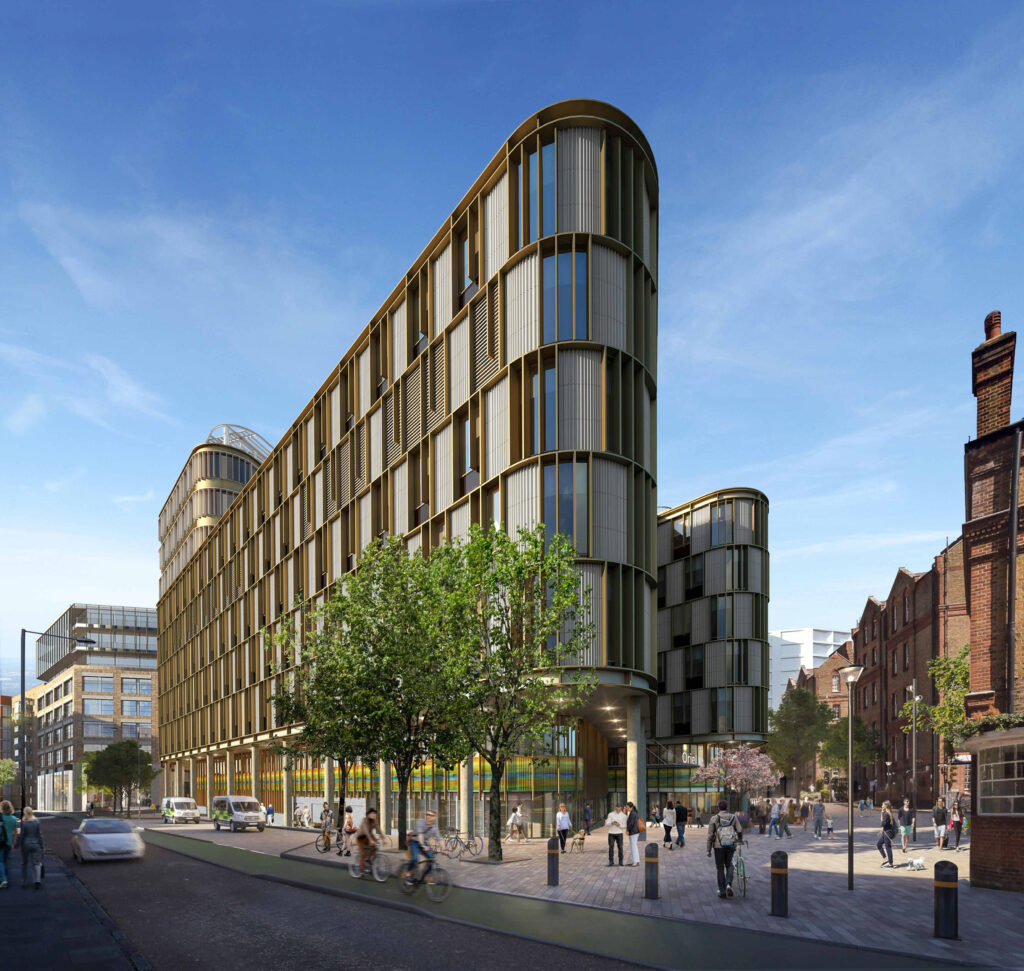People Spotlight: Meet David Cheshire
Our People Spotlight series gives you an inside look at our technical experts around the world. This week, we are highlighting an author, leader and expert in regenerative design and sustainability in the built environment.
David Cheshire is a director at AECOM and leads a team of sustainability experts who provide advice on net zero, circular economy, low embodied carbon, building performance, and net positive, regenerative design. His team covers building assessments, including LEED, BREEAM, WELL, SKA, NABERS, embodied carbon assessments, the UK Net Zero Carbon Building Standard, and soft landings. David is the author of Building Revolutions, The Handbook to Building a Circular Economy and the newly released Regenerative by Design, which explores how buildings can have a positive impact on the planet, becoming an active part of the ecosystem. He has also authored the Chartered Institution of Building Services Engineers (CIBSE) guide to sustainability and CIBSE TM54, a widely adopted industry standard for evaluating the operational energy performance of buildings at the design stage.
Tell us about what inspired you to join the industry.
I grew up in the countryside, surrounded by nature, and I spent much of my time making dens and treehouses from scavenged materials. I think it was my upbringing and the growing awareness of global warming back in the late eighties that inspired me to become an environmentalist. I was also always fascinated by buildings, and so when I went to university all my building design assignments included natural ventilation with thermal mass and openable windows. I even drew red and blue arrows to illustrate the movement of hot and cold air in the design until a lecturer pointed out that drawing arrows didn’t mean the air would flow as I intended! It was a simple yet powerful insight. So, I decided to dive deeper and pursue a master’s degree in Energy and the Built Environment, where I learned all about heat transfer and modelled buildings in Tas — a tool that was then at the forefront of dynamic simulation.
My dream job was to become involved in environmentally conscious buildings and when I started working with Miles Attenborough in 1997, I knew I’d found the right career. Miles is still my boss nearly thirty years later.
I grew up in the countryside, surrounded by nature, and I spent much of my time making dens and treehouses from scavenged materials. I think it was my upbringing and the growing awareness of global warming back in the late eighties that inspired me to become an environmentalist.
What is your favorite AECOM project that you’ve worked on and why?
My favourite project has been working with the Greater London Authority (GLA) on implementing its circular economy policies. By lucky timing, I published my first book on applying the circular economy to the built environment a year before the GLA published its new draft London Plan.
The GLA introduced new policies on circular economy buildings into the draft London Plan and they asked whether they could include one of the key diagrams from my book. My diagram summarises the circular design principles, including prioritising retention of existing buildings, design for adaptability, and design for disassembly. The GLA adopted these design principles to assess the circular economy design of projects applying for planning permission.

Since then, I’ve had the good fortune to work with the GLA to implement its policies. I helped to pilot the draft circular economy guidance, refining and updating it for publication. I then assembled a team that produced the review templates, proformas and assessment tools to create an enforceable system.
It has been a real privilege to have shaped the implementation of such a ground-breaking policy. Prior to the introduction of the policies, the amount of waste arising from the demolition and construction of buildings remained largely unknown, and retention and refurbishment were not prioritised. When I was writing my book, the term circular economy was very much a niche subject, so it has been brilliant to be part of the rapid change that has happened in London.
The progress in implementing the policies is reported annually by the GLA. The reports demonstrate that applicants are considering how London’s existing buildings can be retained for the future and are delivering best practice and industry leading strategies.
It has been a real privilege to have shaped the implementation of such a ground-breaking policy. Prior to the introduction of the policies, the amount of waste arising from the demolition and construction of buildings remained largely unknown, and retention and refurbishment were not prioritised.
Tell us a story of how your work positively impacted the community.
It has been very rewarding working on several new hospital projects, including Moorfields Eye Hospital, Hillingdon and the Cambridge Cancer Research Hospital. All new hospitals must meet the National Health Service’s Net Zero Carbon Buildings Standard, and my team has been working to ensure that the buildings reduce their impact on the planet while providing essential healthcare services for the community.
In addition to cutting embodied carbon and operational energy use in the designs, we have emphasised the importance of learning from our projects already in operation. To support this, Richard Mann and I launched the EVOL+VE initiative within AECOM in 2019. The program encourages our engineers to revisit projects a year or more after completion to gather valuable feedback from the building operators and occupants, and to review the building performance against the design intent. We initially implemented EVOL+VE on healthcare projects, where it has provided invaluable insights on how to make buildings work better for the people, planet and for the budget.
These valuable lessons learned have influenced new projects, including the use of 3D walkthroughs to demonstrate key building functions to operators and occupants, and designing out complexity to ensure comfort and ease of operation.
I have had the opportunity to apply these learnings as the Government Soft Landings Champion for the Cambridge Cancer Research Hospital project. Soft Landings is all about ensuring a smooth transition from design to operation — fine-tuning the building to perform as intended. This approach includes ongoing support from designers and constructors after completion to resolve any early issues, and actively involves building occupants and operators in the design process to ensure that there is no gap between expectation and reality.
I had always been inspired by the potential for buildings to leave a positive impact on the planet. When I saw the idea of regenerative design start to take root in the UK, I decided to write my third book on the topic. The idea of regenerative design is to create a built environment that becomes an active part of the ecosystem, rather than one that takes from the planet. It recognises that the ecosystem is our life support system — without it we would have no fresh water, edible food and breathable air. Since it was published last year, I have been asked to present at numerous events and directly to many developers and architectural practices. From the feedback I’m getting, it’s proven highly popular and an inspiring topic for the whole design and construction community.
I’m passionate about helping avert the worst impacts of climate change. It’s an impossible task for one person, so I believe it’s essential to set out a vision for progress and encourage others to join in shaping the path forward. I hope my work will inspire at least one person to better align their design for a project with the natural world. We are, after all, all part of nature and utterly dependant on having a healthy ecosystem for our continued existence.
In addition to cutting embodied carbon and operational energy use in the designs, we have emphasised the importance of learning from our projects already in operation. To support this, I launched the EVOL+VE initiative within AECOM to encourage our engineers to revisit projects a year or more after completion to gather valuable feedback from the building operators and occupants, and to review the building performance against the design intent.
Share a piece of career advice.
Firstly, I think it’s crucial to find a good leader and mentor to work with, who respects you and is keen to develop your career and support you. Then I think you should try and work in an area that you are passionate about. I’ve been incredibly lucky to have found both a great place to work, a great line manager and an area of work that I’m passionate about.









